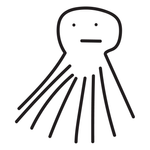- Home
- Illustrator
- Discussions
- Need help with making 308 different-numbered text ...
- Need help with making 308 different-numbered text ...
Need help with making 308 different-numbered text boxes.
Copy link to clipboard
Copied
So I need to make lists of 30 numbers on a page until it reaches 308. What is the best way to do this? I've tried a script but it's giving an error and was just wondering if there was a better way to do it or if anyone has a better script to use. Any help is appreciated!
Thanks in advance!
Explore related tutorials & articles
Copy link to clipboard
Copied
could you provide an image of what youre looking for?
is Indesign an option for you?
Copy link to clipboard
Copied
It is, yes. And the layout would look somewhat like this. Each page would have 30 numbers and I need the numbers to go until 308- however many pages that is.
The layout doesn't matter too much, placing them would be easy, I'm just mainly looking for a way to get 300 unique textboxes without typing them.
Copy link to clipboard
Copied
a script could do this, but i think learning InDesign's Data Merge tool would be better.
you would create an excel sheet of whatever Data you want. in this case it's just the numbers 1-300+.
Then you create a file in indesign and design the text box to your liking then merge the data and it will replicate the data through the design. It would be a multi-record merge.
Copy link to clipboard
Copied
Ok, sweet thanks for the help. Didn't know such a tool existed haha.
Copy link to clipboard
Copied
With some helper objects (straight lines with a certain number of anchor points), you may use the NumeratePoints script that is provided by Sergey Osokin.
Copy link to clipboard
Copied
As @Robert38512781pn4f mentioned, they may be better ways to do this. But since I had a function already that does most of this, I will share this script, too.
- Mark
/**
* @file Make Numbered Text Frames On Artboards.js
*
* Makes numbered text frames on available artboards.
* Adjust the constants START, END, ITEMS_PER_ARTBOARD,
* GAP_PTS and TEXT_SIZE_PTS.
*
* @author m1b
* @version 2024-07-10
* @discussion https://community.adobe.com/t5/illustrator-discussions/need-help-with-making-308-different-numbered-text-boxes/m-p/14728931
*/
(function () {
const START = 1,
END = 308,
ITEMS_PER_ARTBOARD = 30;
const GAP_PTS = 60,
TEXT_SIZE_PTS = 30;
var doc = app.activeDocument,
total = END - START,
len = Math.ceil(total / ITEMS_PER_ARTBOARD);
if (doc.artboards.length < len)
return alert('Not enough artboards to fit ' + ITEMS_PER_ARTBOARD + ' numbers per artboard.\n(' + doc.artboards.length + ' available, ' + len + ' required).');
for (var i = 0, ab, bounds, remainder = total + 1, counter, frame, frames; i < len; i++) {
frames = [];
counter = Math.min(ITEMS_PER_ARTBOARD, remainder);
while (counter--) {
frame = doc.textFrames.add();
frame.contents = total - (--remainder) + START;
frame.textRange.size = TEXT_SIZE_PTS;
frames.push(frame);
}
ab = doc.artboards[i];
bounds = ab.artboardRect;
arrangeItems({
items: frames,
gap: GAP_PTS,
maxWidth: bounds[2] - bounds[0],
origin: [bounds[0], bounds[1]],
});
if (remainder < START)
break;
}
})();
/**
* Positions page items in a simple L-R, T-B grid,
* given `maxWidth`, with `gap` between each item.
* The `lineHeight` variable is the largest height
* in a given row.
* @author m1b
* @version 2023-11-01
* @param {Object} options
* @param {Array<Number>} options.origin - the origin [x,y] of the top-left of the grid.
* @param {Array<PageItem>} options.items - the items to position.
* @param {Number} [options.maxWidth] - the maximum width of the grid area, in points (default: no maximum).
* @param {Number} [options.gap] - the gap between items (default: 0).
*/
arrangeItems = function arrangeItems(options) {
options = options || {};
var origin = options.origin,
items = options.items,
maxWidth = options.maxWidth || Infinity,
gap = options.gap || 0;
var x = 0,
y = 0,
lineHeight = 0;
for (var i = 0; i < items.length; i++) {
var item = items[i];
if (x + item.width > maxWidth) {
// move down
x = 0;
y -= (lineHeight || item.height) + gap;
lineHeight = 0;
}
// position the item
items[i].position = [origin[0] + x, origin[1] + y];
// move right
x += item.width + gap;
if (item.height > lineHeight)
lineHeight = item.height;
}
};

